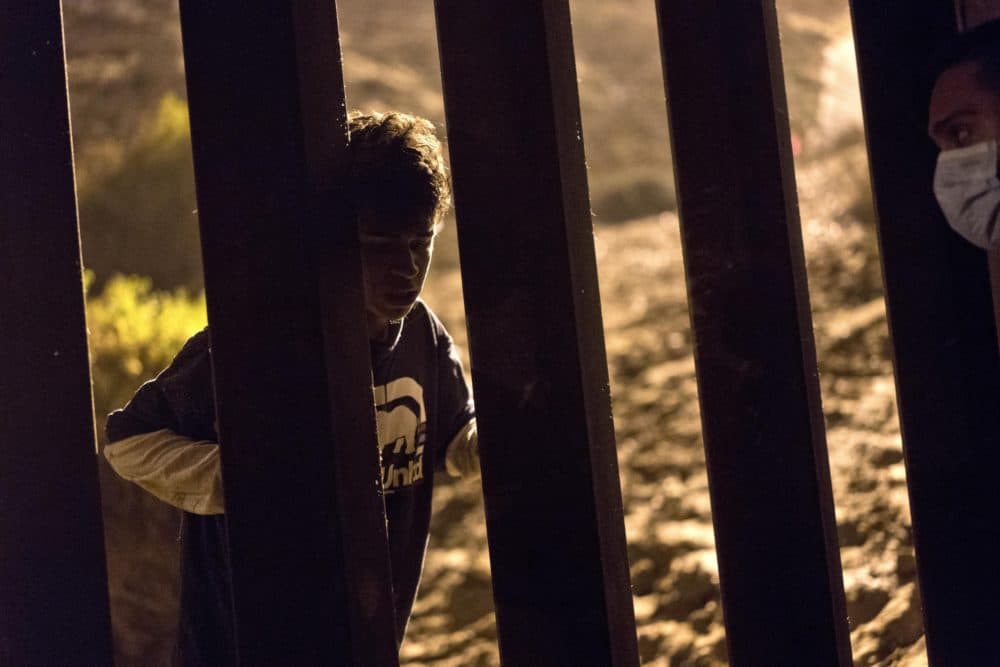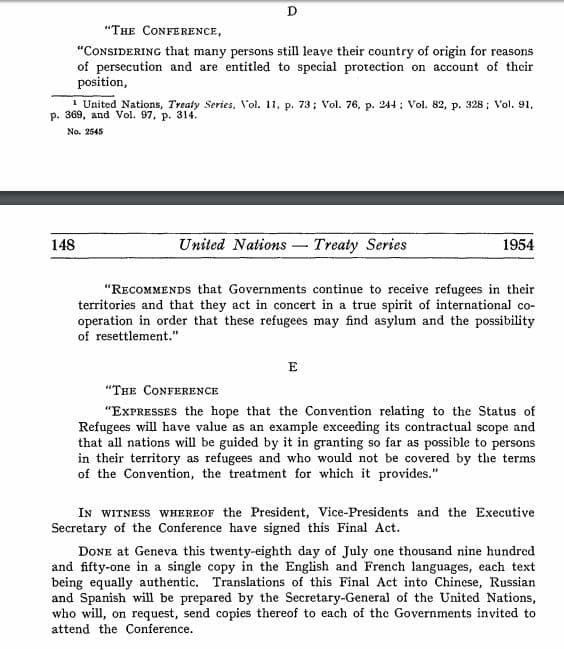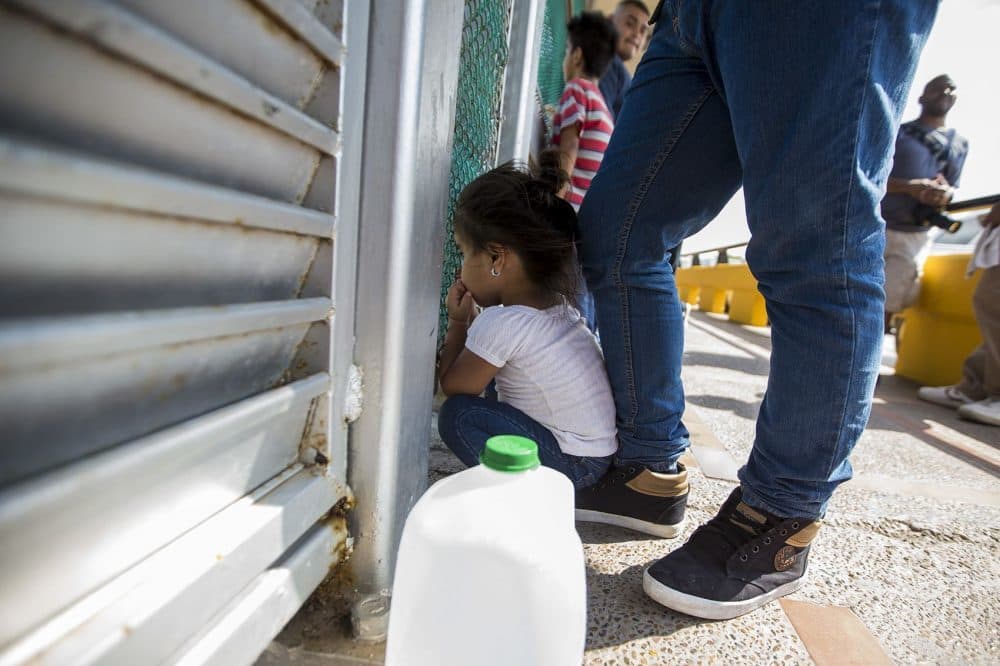Advertisement
What Is Asylum? Who Is Eligible? Why Do Recent Changes Matter?

Thousands of migrants traveling together to flee dire circumstances in their native Central American nations are camped in towns and cities edging the U.S.-Mexico border. Many hold out hopes that despite intense political pushback, they'll be given a chance to apply in the U.S. for the humanitarian immigration status known as asylum.
Many of the people in the migrant caravan traversed hundreds of miles, often on foot, to reportedly escape extreme poverty and targeted violence in their native countries — especially El Salvador, Guatemala and Honduras.
These people are representative of the increase in asylum-seekers coming to the U.S. in recent years. According to a report from the United Nations High Commissioner for Refugees, the U.S. received 262,000 asylum applications in 2016 — double the number in 2014 — with almost half of the applications coming from Central American nationals.

President Trump has consistently criticized asylum as his administration pushes to curb both legal and illegal immigration to the U.S. He has referred to the nation's longstanding policy of asylum as "ridiculous," often lamenting the legal infrastructure that protects the rights of asylum-seekers.
Months before his forced resignation this month, former U.S. Attorney General Jeff Sessions claimed the asylum application process was "being gamed," insisting that fraudulent petitions flood the system and prevent legitimate applications from being efficiently processed. Immigrant advocates say the rollback of asylum measures is just another step in the Trump administration's assault on legal immigration.
So, what exactly is asylum? Who is eligible? And how are things changing under President Trump?
What Is Asylum?
Asylum is a protection granted to foreign nationals who can prove they have a credible fear of returning to their home country because of very specific reasons that are outlined by U.S. and international law. To qualify for asylum, a person must show they've suffered persecution or have a legitimate fear they will face persecution in the future, based on any of these factors:
- race
- nationality
- religion
- political opinion
- membership in a particular social group
According to U.S. immigration law, a person granted asylum is legally allowed to remain in the U.S. without fear of deportation. An asylee may qualify to work in the U.S., travel abroad and apply for the same asylum status for their spouse or child.
The concept of asylum — of providing a safe haven to people fleeing oppression -- was formally recognized by the international community at the United Nations in 1951. There, in the wake of World War II and the devastating persecution suffered by Jewish people and others during the Holocaust, 145 nations defined the term "refugee" and established standards for the treatment of people seeking protection in foreign countries.

The 1967 United Nations Refugee Protocol, to which the United States is a signatory, broadened protections for people seeking asylum. In 1980, Congress incorporated these standards and definitions into U.S. immigration law.
Who Is Eligible And Where Can You Apply?
"Any alien who is physically present in the United States or who arrives in the United States (whether or not at a designated port of arrival ...), irrespective of such alien's status, may apply for asylum ..."
That quote is from the Immigration and Nationality Act. It means that the right to at least apply for asylum is enshrined in U.S. law.
And, according to the above provision, that application process can begin at what's known as an "official port of entry" — think airports, official border crossings, or basically anywhere you're interviewed by a U.S. Customs Border Protection officer before being allowed into the U.S. — or, alternatively, at places in between those official entry points.
Let's focus on the border. Say, for example, a woman illegally crosses into the U.S., avoiding an official port of entry. After crossing into the U.S., she encounters a border agent — the officials who patrol the wide swath of land between official entry points. Even though she entered the U.S. without being processed through an official port of entry, according to U.S. immigration law, she is still legally entitled to request asylum. She can tell the border agent she fears returning to her home country and request an interview to begin the asylum application process.
Individual asylum claims vary widely and so does the amount of time it takes to receive a decision from an immigration judge. On average, a decision should be made within 180 days of filing an application, according to U.S. Citizenship and Immigration Services. If asylum status is granted, the asylee may apply for work authorization, a social security card and, after one year of residence in the U.S., a green card. If more than 180 days pass from the date of filing and the government needs more time to issue a decision, then an asylum-seeker can apply for work benefits.
How Has Asylum Changed Under The Trump Administration?
One of the most significant shifts came in June when Sessions overruled an Obama-era decision from the Board of Immigration Appeals, the highest immigration court in the country, that formed the basis for victims of domestic violence being recognized as members "in a particular social group" in seeking asylum.
Sessions said the asylum system works as a loophole for people trying to enter the U.S. under false claims they've been victims of domestic violence or gang violence. The decision essentially erased precedent that many immigration lawyers referenced in arguing asylum claims.
"Asylum was never meant to alleviate all problems — even all serious problems — that people face every day all over the world," Sessions said.
In November, Trump also introduced a new rule to force asylum-seekers to apply for status solely through official ports of entry. The proposed change was quickly challenged in court, and a federal judge ruled that denying the right to apply for asylum to people entering the U.S. between ports of entry — or, in other words, anywhere on U.S. soil — was contrary to existing law.
While the future of Trump's proposed change to asylum eligibility plays out in court, CBP officers have begun a process at the official ports of entry referred to as "metering."
Officers are preventing people from initiating the asylum application process by stopping would-be asylum-seekers before they reach U.S. soil. Migrants are told that limited resources at the ports of entry mean only a finite number of applications can be processed each day, forcing them to wait in Mexico in the interim.

We witnessed this first-hand in June at the border crossing between Brownsville, Texas, and Matamoros, Mexico. A podium was set up mid-way across a footbridge and pedestrians holding U.S. passports and other documentation were able to pass. Those hoping to apply for asylum were asked to show their travel documents and often made to wait in the scorching summer heat. Families said they were told by border officials that the U.S. government didn't have enough resources to process their asylum claim at that time. Many people chose to stay put on the bridge, hoping to hold their place in line and apply for asylum the following day.
The Trump administration is reportedly in the process of making a deal with the incoming Mexican government that would further alter U.S. asylum practice, forcing migrants to remain in Mexico while they await a decision on their asylum claim.
Some legal experts say this proposition is inherently problematic because there is no way for the U.S. to guarantee a migrant's safety while waiting in Mexico — a key provision in the asylum process.
